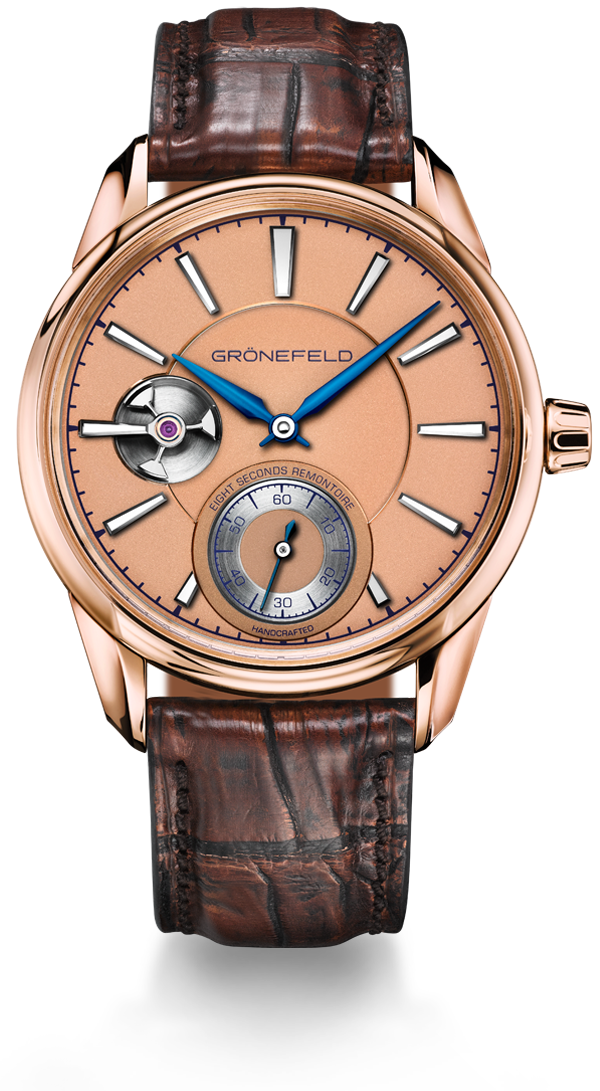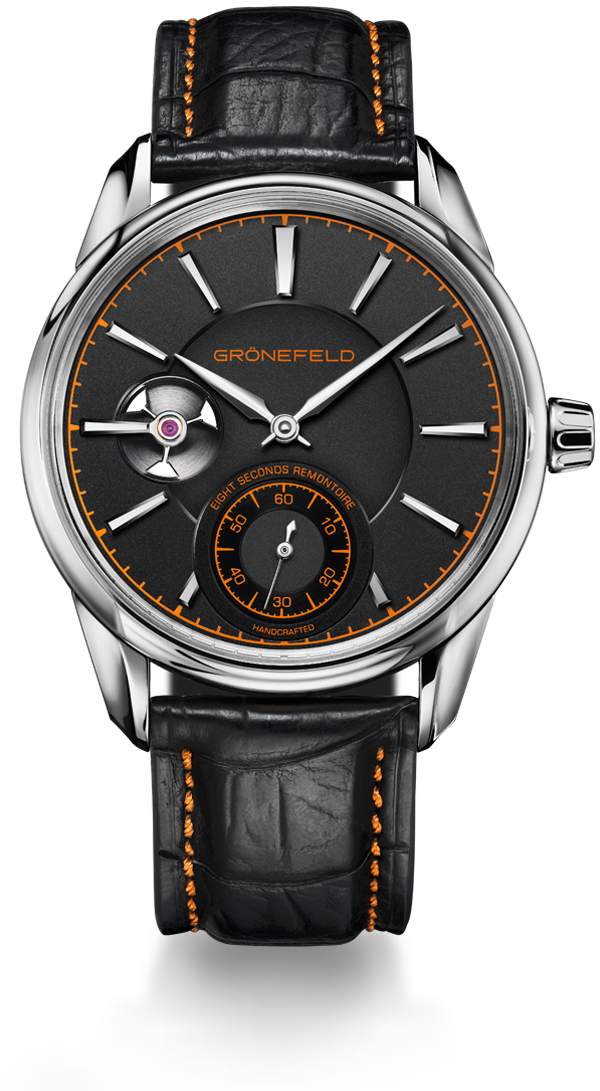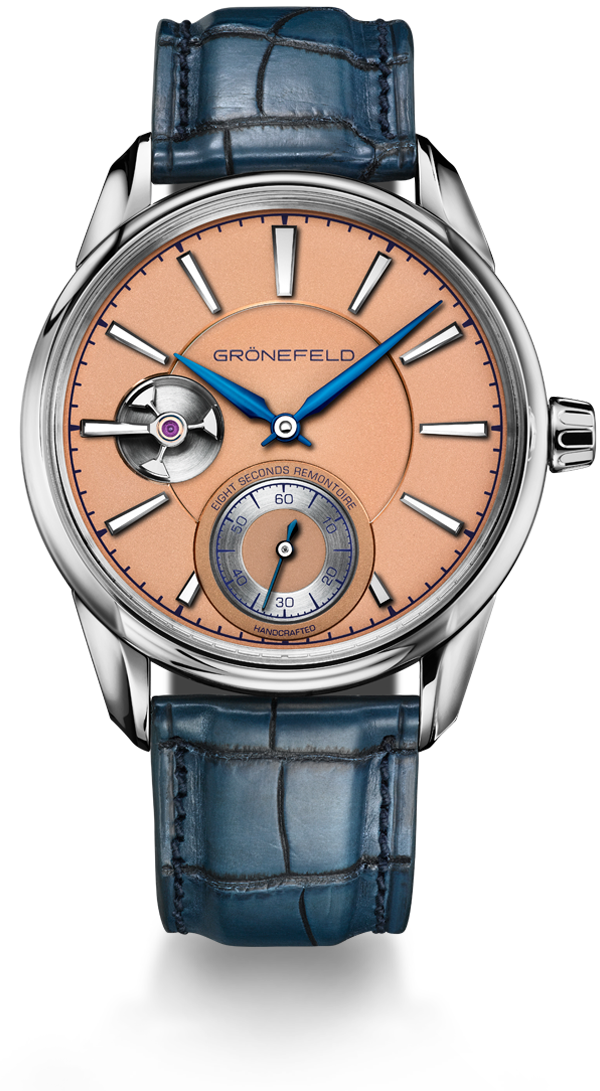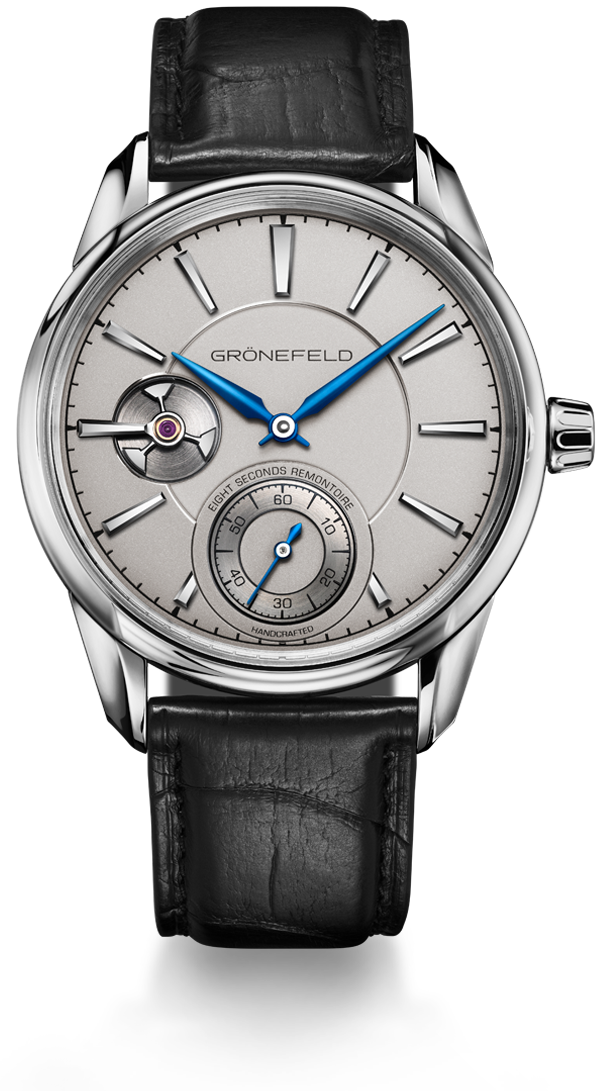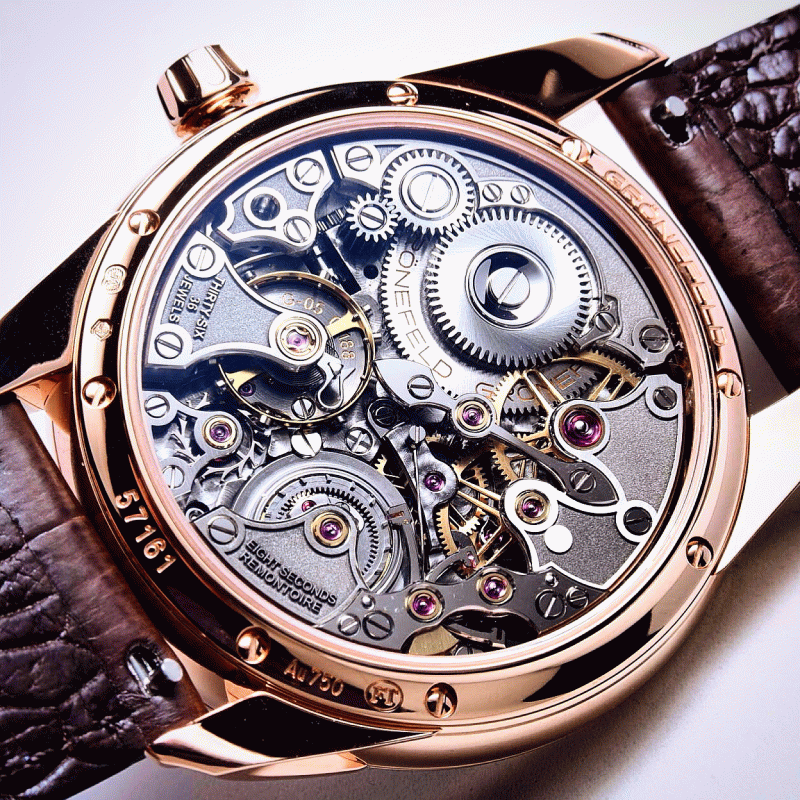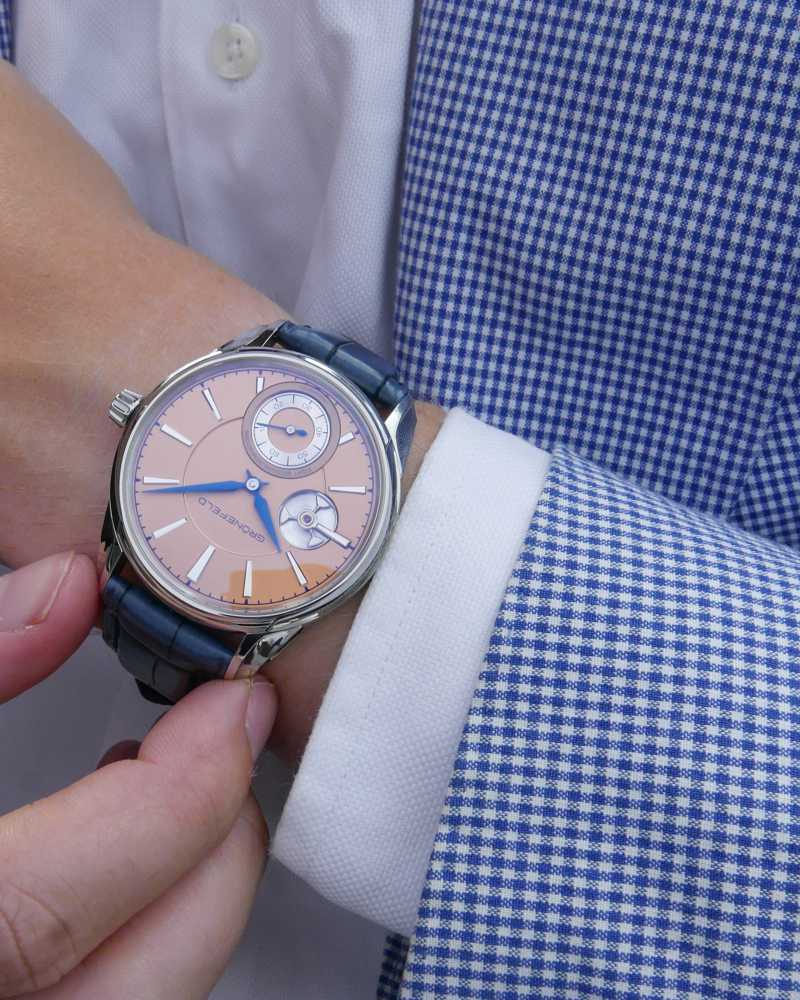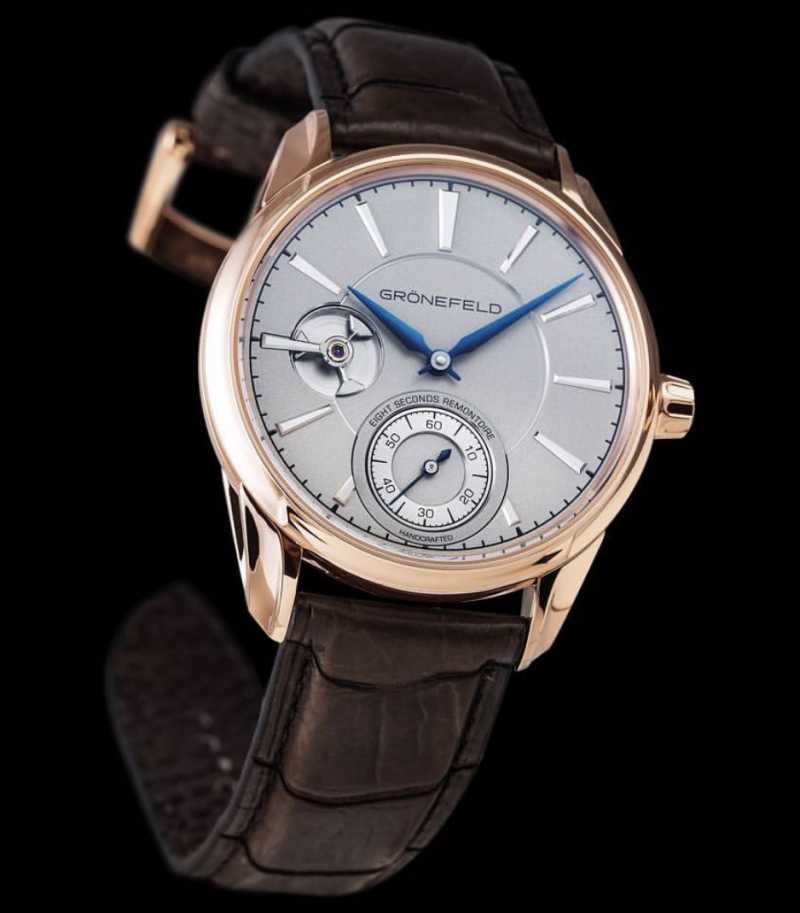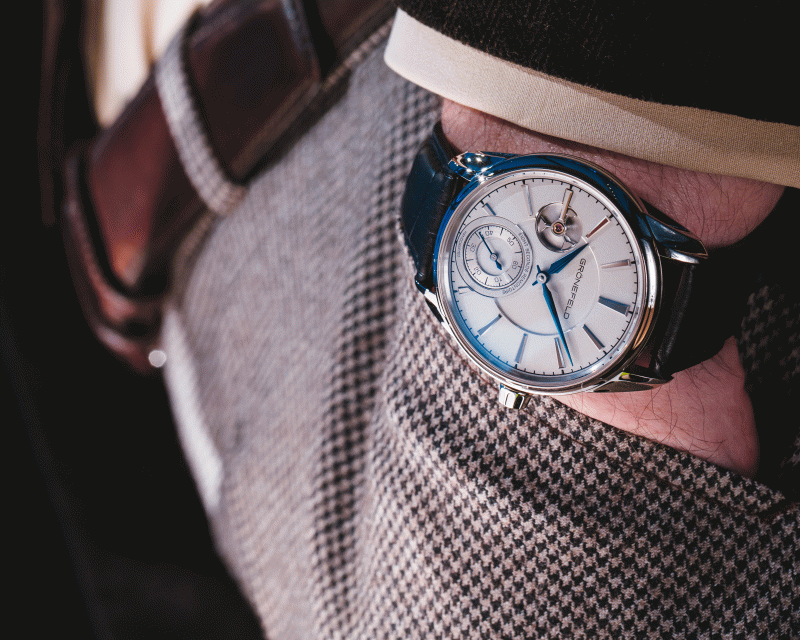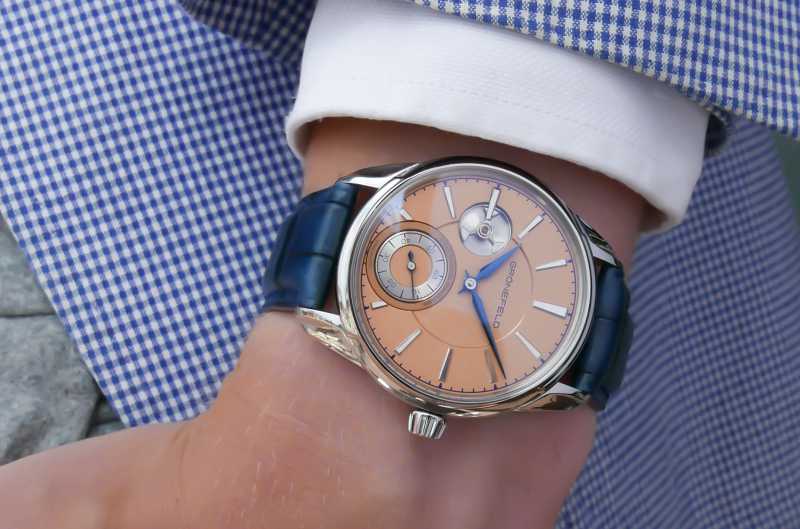
1941 Remontoire Constant Force RG
The Grönefeld 1941 Remontoire features an eight seconds constant force mechanism, ensuring the force serving the balance wheel does not wane.
From the mainspring being fully wound to the last minute of the 35 hours of power reserve, when the stop works intervenes, the force never fluctuates. The result is that the amplitude and rate remain consistent, leading to superior precision.
The time-consuming creation of each movement means that production will be limited to only 188 Remontoire movements, each with its own unique serial number, offered in a choice of case material and dial variants.
After the launch in 2016 the 1941 Remontoire has been awarded 5 times! In November 2016 Grönefeld won again the prestigious Grand Prix d'Horlogerie de Genève award. This time the prize they’ve won was for the best watch in the “Mens Watch” category.
The name ‘remontoire’ is derived from the French word ‘remonter' and means ‘to wind’. A remontoire timepiece winds itself to charge a small power source near the escapement.
Housed within the Grönefeld 1941 Remontoire is a release system that is activated every 8 seconds and winds a small hairspring which is located underneath the dial. Based on a 24 hour day divided by 8 seconds means that the Remontoire’s mechanism is releasing and winding itself 10,800 times a day or almost 4 million times a year.
Where does the inspiration for the Grönefeld 1941 Remontoire come from?
Ever since Bart and Tim were young boys they would frequently play to the sounds of the Saint Plechelmus church clock movement, close to the location of the company's workshops. This movement has always played an important part in the history of Grönefeld.
Johan Grönefeld, the brothers’ grandfather, was responsible for maintaining the church clock. When Johan passed away, this responsibility transferred to his son, Sjef, the brothers’ father.
The church clock, created in 1913 by the firm Royal Eijsbouts in the Netherlands is equipped with a remontoire mechanism. The rationale for the remontoire being used in the church clock was the clock's display was positioned much higher than the movement, necessitating significant force. However, the magnitude of such force would prove too great for a conventional escapement, hence a remontoire, or constant force mechanism, was fitted. Moreover, the minute hand was calibrated to jump every 30 seconds, breaking any ice which may have formed in cold weather and, in so doing, preventing the clock hands from freezing.
Red Gold
White Gold
Stainless Steel
Alternative available models
A movement for purists
From the outset, Bart and Tim always envisaged the Grönefeld 1941 Remontoire as a watch intended to appeal to the most discerning of watch collectors. It was therefore imperative that the movement was befitting of such a timepiece, appealing to the exacting requirements of purists. The stainless steel bridges replicate the facades of the Dutch houses, termed 'bell gables' and reference the homeland of the Horological Brothers, Bart and Tim. The bridges are hand-beveled, evincing a brilliant gleam, while the centres deliver a sublime contrast with their micro-blasted surfaces, adorned with relief engraving.
The new 5-arm, double spoke gear train wheels exhibit a contemporary character, but their circular grained surfaces pay due reverence to fine watchmaking tradition. The movement includes a balance wheel with white gold timing screws and is equipped with a free-sprung over-coil hairspring with triangular stud. Gold chatons stand testament to the no-compromise specification of this movement whilst mirror polished screws feature chamfered rims and slots. Numerous surfaces glisten, courtesy of mirror-polishing which has been patiently executed by time-served hands. The inventory of different surface decorations will sate the desires of any purist and include snailed, grained, spotted and frosted surfaces.
With so much beauty harnessed within the Grönefeld 1941 Remontoire it only seemed appropriate to share the movement with wearers, equipping the timepiece with a sapphire case back.
There’s a tremendous amount of manual labour involved in building a 1941 Remontoire. Just the finishing, assembly and adjustments require at least 220 hours of full concentration.
The time-consuming creation of each movement means that production will be limited to only 188 Remontoire movements, each with its own unique serial number, offered in a choice of case materials and dial variants.

Technical specifications
Movement
| Calibre | G-05 |
| Movement dimensions | Diameter: 32,0 mm Thickness: 5,5 mm |
| Number of parts | 258 parts |
| Power reserve | 35 hours with constant force (stop system) |
| Number of jewels | 36 jewels, partially set in solid gold chatons |
| Remontoire | To optimize time keeping a small hairspring is wound every 8 seconds to guarantee a constant force for the escapement. A complex satellite gearing mechanism with hypocycloidal gears, twin ball bearings, pinions and jewelled levers, achieve this. |
| Balance wheel | Variable-inertia balance wheel with four white gold timing screws (diameter 10 mm) |
| Frequency | 21.600 vibrations/hour |
| Balance spring | Free sprung with Phillips terminal over coil curve with triangle hairspring stud |
| Escapement | Jewelled Swiss lever |
| Main Plate | Spotted and ruthenium electroplated brass main plate |
| Bridges | Stainless steel, bevels polished by hand, micro-blasted centre Circular grain on the top to highlight the bridges shapes and engravings Relief engraved Grönefeld logo, number of jewels and eight seconds remontoire |
| Hacking seconds | In setting mode the hacking seconds mechanism will be activated |
| Displays | Central Hours and Minutes Small Seconds at 6 o’clock Governor speed regulator at 9 o’clock |
Case and dial
| Case dimensions | Diameter: 39,5 mm Thickness: 10,5 mm |
| Water resistance | 3 atmospheres – 30 meters – 100 feet |
| Material | White gold Au750/Pd210 (Non Rhodium plated) / Red gold Au750 5N or Stainless Steel (1.4435) |
| Crown | Case matching material, engraved with The Horological Brothers logo |
| Dial | Sterling Silver 925, frosted and satin-grained surfaces |
| Hands | Extended Lancette hands. Flame-blued steel and mirror polished centres. Small poised seconds hand |
| Strap | Hand-sewn aligator leather. 20mm-18mm |
| Buckle | Pin buckle made in Red Gold Au750 5N, White Gold Au750/Pd210 (non rhodium plated) or Stainless Steel 916L engraved with Grönefeld. 18mm |
| Crystals | Domed sapphire crystal on the front with hard anti-reflective coating on both sides Flat sapphire crystal on the back with hard anti-reflective coating on both sides |
| Number of components | 66 parts |
| Total weight | Stainless Steel 74 Grams Red Gold 97 Grams White Gold 97 Grams |
Other models
Contact us for more
information
contact
Gallery








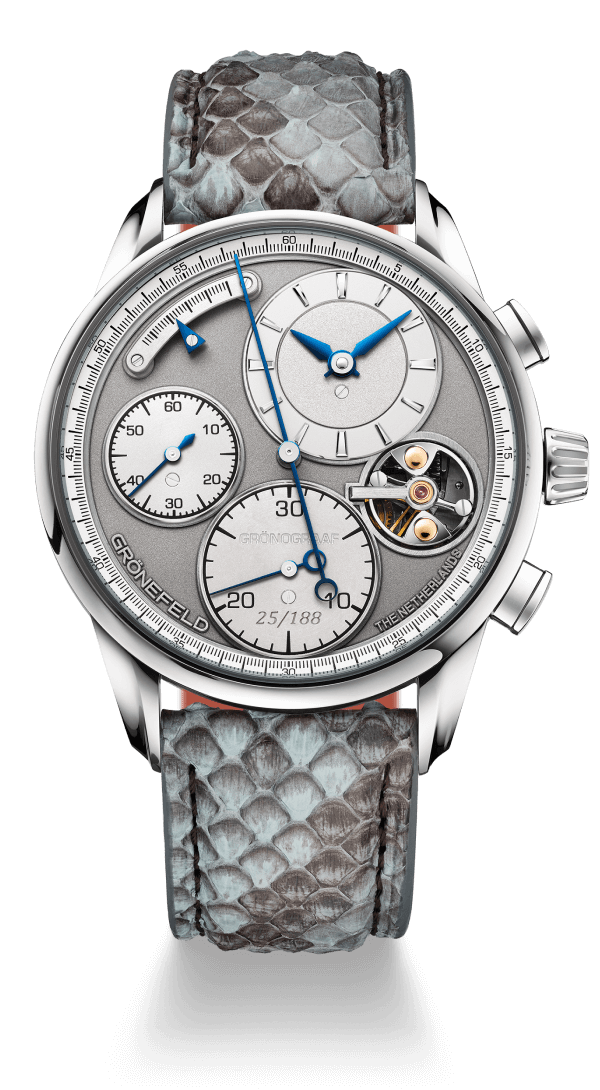 1941 Grönograaf
1941 Grönograaf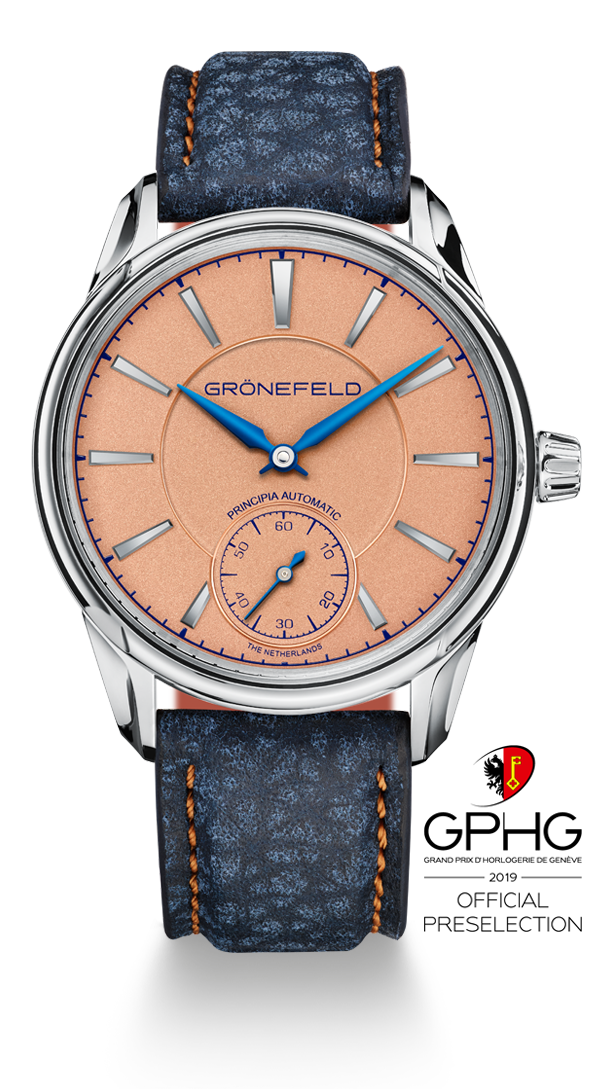 1941 Principia
1941 Principia 1941 Principia
1941 Principia




